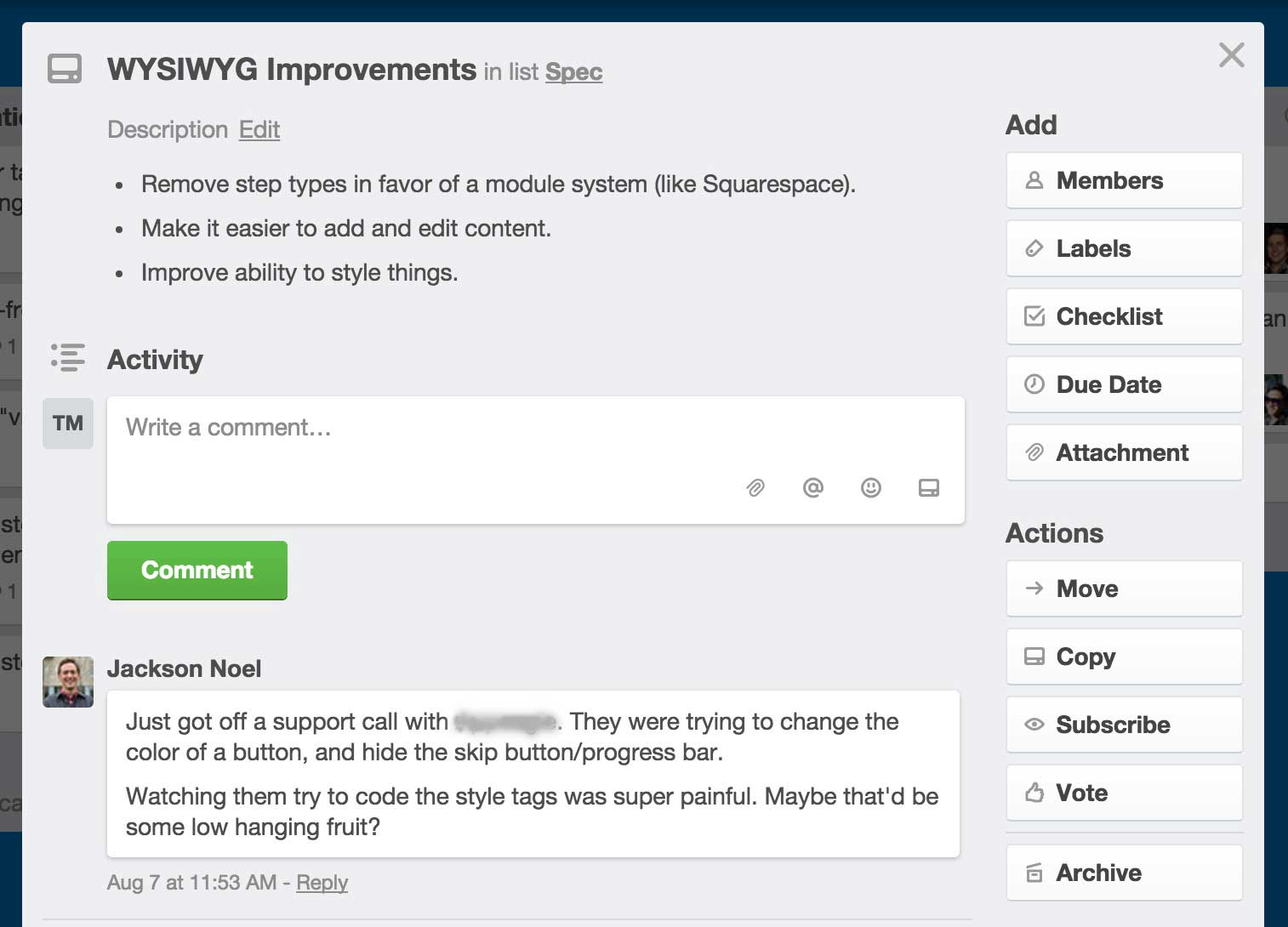The characteristics of a transparent culture—things i've learned since joining Appcues

.png)

.png)
From open salaries and equity to visibility into each others’ workflows, Appcues is as transparent a company as they come.
Now I’ve worked in transparent settings before, but when transparency is made a cornerstone of its culture, it affects the team on a profound level. Here are some of the positive characteristics I’ve observed:
There’s an inherent high-level of trust in a company that has transparent values. The message that’s sent to you before you even sign your contract is that there’s nothing to hide. Because they’ve opened their books to you—literally with regard to salaries—and that’s worthy of trust.
In fact, I signed my contract without even knowing what percentage of equity I was being offered. Equity is ultra important to me, but I gave Appcues trust in that my equity stake will soon be very visible, and I would not get screwed. I figured there will be others that will be in the same seat as me. I can’t get screwed.
This deep level of trust radiates throughout many transparent companies; we’re not the only ones to experience this.
At Appcues, we operate on salary bands for different positions. It’s a little like the salary formula Buffer uses. Effectually, this takes compensation negotiations off the table, and humbles those who have been rewarded for switching companies with frequency.
Because people are not here simply for another raise, there is a belief that we have hired the most qualified person in the world to do each job. Although we definitely check up on each other’s work and see everything we are all producing, we trust each other to drive their area to success.
Because all documents and process are transparent, everything is open for discussion. From the product to the hiring process to what you are having for lunch, there is a continuous flow of ideas.
These ideas are circulated through sources open to the team such as Trello, Google Docs and Slack with many @ tags to include other team members. For example, here’s Jackson, having communicated with a customer, commenting on the product Trello board:

Collaboration can be more inclusive when workflows are transparent. And because we coordinate communications directly in these open channels, we have less email and very few meetings. This style enables us to value face time less and work remotely more. My recurring workweek looks like this:

Although online collaboration is nice, there are a few requirements for it to work smoothly. Everyone has to put in a little extra effort to make sure the items they are adding to Trello or Drive are well organized. Folders, titles, boards, and lists must all be clearly labeled and have it’s place. This challenge requires diligence and attention to detail.
We are very fortunate to have founders that are honest do-gooders. Deciding to build a transparent culture was no doubt a result of their personalities and personal beliefs.
Founders should wear their values on their sleeves, and if transparency isn’t a natural fit for them, then they should consider other cultural opportunities to center their team.
For companies looking to transition into a transparent startup, there are some easy stepsyou can take, but first and foremost, you should consider involving your team in the conversation. This gesture should help sets the tone for cultural development, and you may be surprised at their response.
Building a transparent culture requires patience, candor and trust. It’s not easy. But the value that your team can gain is well worth the effort.
It has been said that transparency “forces a team to work smarter together,” and I couldn’t agree more with this. Transparency can be difficult, but when embraced by all it can help turn your team into a family that’s working towards a shared goal.